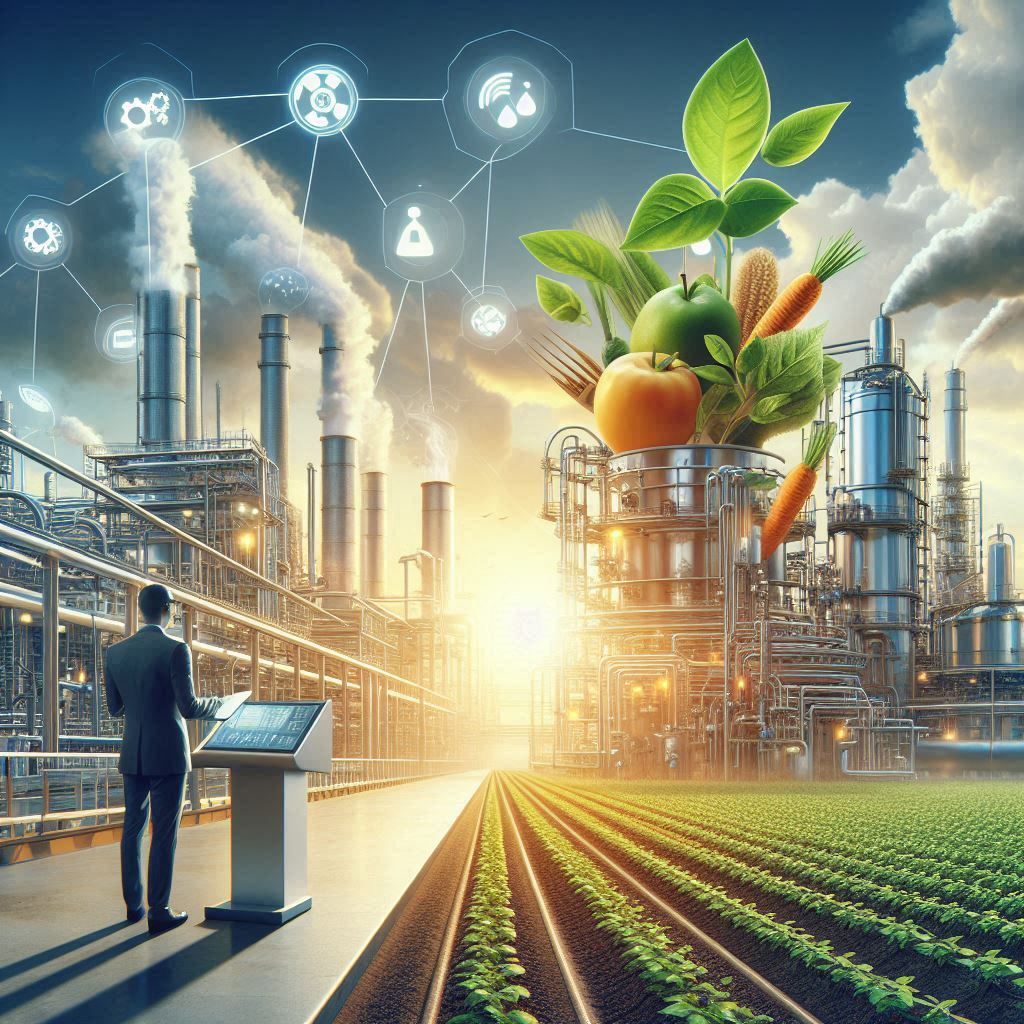Smart Farming, Smart Factories: Sustainable Food Production for Tomorrow
Introduction
The demand for food continues to rise with global population growth, placing immense pressure on agricultural and industrial food production systems. Smart farming and smart factories are transforming the food industry by integrating advanced technologies, optimizing resource use, and reducing environmental impact. By merging sustainable agricultural practices with cutting-edge manufacturing processes, the future of food production is being redefined for a greener tomorrow.
The Need for Sustainable Food Production
Traditional food production methods contribute significantly to environmental challenges, including:
- Excessive water and land use.
- High greenhouse gas emissions.
- Food waste and inefficient supply chains.
- Overreliance on chemical fertilizers and pesticides.
To combat these challenges, industries are adopting smart technologies that enable efficiency, transparency, and sustainability.
Smart Farming: A Technological Revolution
Smart farming leverages technology-driven agriculture to optimize food production with minimal environmental impact. Key innovations include:
1. Precision Agriculture
- IoT-based sensors monitor soil health, moisture levels, and crop growth in real time.
- AI-powered drones and satellite imaging provide insights for better land and water management.
- Automated irrigation systems reduce water waste and enhance yield efficiency.
2. Vertical and Urban Farming
- Hydroponics and aeroponics use nutrient-rich water instead of soil, reducing land and water requirements.
- LED lighting and climate control systems maximize crop growth while minimizing energy use.
- Urban farming solutions bring food production closer to consumers, cutting transportation emissions.
3. Sustainable Livestock Management
- AI-driven monitoring systems track animal health and nutrition, reducing disease and antibiotic use.
- Methane-reducing feed additives lower emissions from livestock farming.
- Regenerative grazing techniques enhance soil fertility and carbon sequestration.
Smart Factories: Innovating Food Processing & Distribution
Smart factories in food production integrate automation, AI, and IoT to enhance efficiency while reducing waste and carbon emissions.
1. Energy-Efficient Food Processing
- AI-driven manufacturing systems optimize production lines, reducing energy consumption.
- Renewable energy sources like solar and bioenergy power processing plants.
- Heat recovery systems capture waste heat for reuse in processing operations.
2. Minimizing Food Waste
- AI-based demand forecasting helps manufacturers produce only what is needed.
- Blockchain technology enhances traceability and reduces spoilage in supply chains.
- Food upcycling initiatives turn byproducts into new food products or animal feed.
3. Eco-Friendly Packaging and Logistics
- Biodegradable and edible packaging reduces plastic waste.
- Electric and hydrogen-powered transport lowers emissions in food distribution.
- Cold chain optimization ensures perishable goods maintain quality with minimal energy use.
The Future of Sustainable Food Production
With advancements in AI, robotics, and sustainable energy, the food industry is shifting toward net-zero emissions and resource-efficient systems. Future innovations may include:
- Lab-grown and plant-based proteins to reduce livestock emissions.
- Carbon-neutral food factories using fully renewable energy.
- AI-driven circular economy models to eliminate food waste entirely.
Conclusion
The integration of smart farming and smart factories is paving the way for sustainable food production that meets global demand while preserving natural resources. By embracing precision agriculture, eco-friendly food processing, and waste-reducing supply chains, industries can ensure a healthier planet and a resilient food system for future generations. The transformation toward a sustainable food future is not just necessary—it is inevitable.
